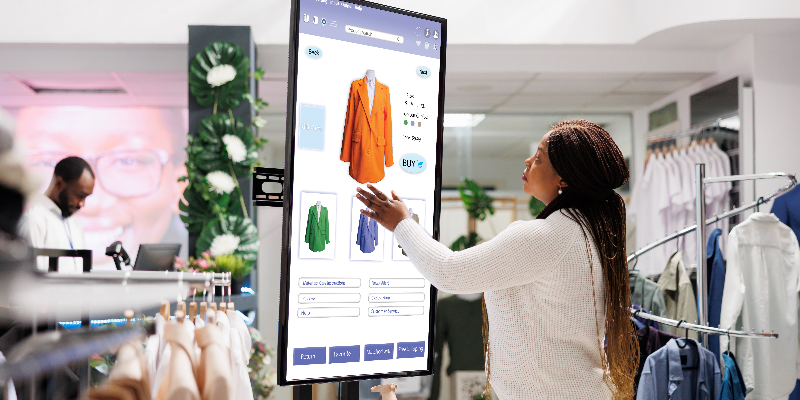

In the age of social media algorithms, SEO strategies, and influencer campaigns, it seems natural to assume that offline branding strategy has lost its relevance. The truth is, though, offline branding still carries significant weight—especially when done correctly. Offline branding leaves long-lasting, physical impressions that online advertising can't necessarily provide.
Whatever your business size, local service firm, or corporate giant looking to get ahead, these tried-and-true offline concepts can increase your brand visibility and complement your online marketing.
Giving away branded goods is nothing new, but how you do it in the modern world makes a big difference. People want well-designed, functional products that feel like gifts rather than disposables, so forget about cheap pens and stress balls.
What is currently effective:
Customers can become brand ambassadors by purchasing merchandise that combines practicality and style, particularly if it is Instagram-worthy.
Packaging is quite likely the least leveraged branding asset—particularly for product companies. A beautiful, memorable unboxing experience creates emotional resonance. Indeed, in the age of unboxing videos and social publishing, good packaging naturally spills over digitally, always consider a Design agency before stepping in.
Tips for good packaging:
Successful packaging branding gives your product personality and value perception, deepening the emotional bond with consumers.

Offline branding strategy has potential to keep a purchase memorable, but digital experiences can be scaled. Brand-sponsored community events, pop-up stores, or booths at local events enable high-touch interaction and memorable storytelling.
Power plays that pop up:
In addition to promoting community, these gatherings increase word-of-mouth and social media buzz, bridging the gap between online visibility and offline presence.
Being unexpected is the key to guerrilla marketing. It draws people in, piques their interest, and starts discussions. Consider interactive installations in busy places which is an effective offline marketing strategy. Including flash mobs, or imaginative sidewalk chalk messages.
Why it is still effective:
Online, people are overstimulated. It's refreshing and shareable to come across a daring or ingenious marketing strategy in the real world. Just make sure your stunt is appropriate for your brand, complies with local laws, and actually adds humor or value. Long after a scroll-by advertisement is forgotten, a memorable experience will remain.
Print is still around, yes. A well-placed print ad in a local magazine, specialized publication, or high-quality direct mail campaign can offer high recall and trust, whereas digital ads can vanish in a matter of seconds.
Make it work:
Print is most effective when it is well-targeted, personalized, and a component of a multi-channel branding strategy.

If your employees share your mission, they are walking billboards and brand ambassadors. A consistent brand identity is reinforced by a strong offline marketing strategy. Which are office décor, branded lanyards, uniforms, and even branded Zoom backgrounds.
Look past the logo:
Genuine human branding emanates from within. The brand becomes more credible when consumers believe in the people who run the business.
Although it may seem archaic, supporting a neighborhood sports team, educational initiative, or nonprofit event is still one of the best ways to match your brand with the values of the community.
Where to appear:
Make sure your sponsorship extends beyond a banner with your logo. Be there. Possess a booth, provide something of value, or engage with guests directly. These initiatives increase brand loyalty and emotional equity.
Professional networking and offline marketing strategy is dominated by email signatures and LinkedIn connections, but the humble business card still has a place, particularly when it leaves a lasting impression.
Tips for modern business cards:
A distinctive business card serves as a topic of discussion and a starting point for subsequent exchanges.
There's no better marketing strategy than real word-of-mouth, online or off. However, offline word-of-mouth occurs through discussions, recommendations, and community involvement, whereas digital referrals are based on reviews and social media shares.
How to promote it in the offline world:
Satisfied consumers speak, particularly when they experience a brand's journey.

Make use of your physical space to implement offline marketing strategy, whether it be an office, studio, or retail store, as a storytelling tool. There is a branding opportunity at every touchpoint.
Make your space better:
People should be able to tell right away who you are and what you stand for when they enter your space.
Offline branding is still relevant and even useful in today's digitally-first world. Digital alone cannot replace the emotional depth, trust, and word-of-mouth momentum that come from in-person interactions. Integration is crucial. Your brand story becomes memorable when your offline branding aligns with your online presence.
Make use of offline branding as a future-focused secret weapon rather than as a holdover from the past. A strategy that strikes a balance between digital reach and tactile experiences will always perform better than one that only uses one of the two.
To build such an impactful strategy, partner up with Bud and an expert branding agency in Bangalore, that understands how to merge the offline and online worlds effectively.